Articles of 2010
Arreola And Pavlik Were Beaten Men Before Their Bouts
Tomasz Adamek and Sergio Martinez performed a great service to not only Cris Arreola and Kelly Pavlik over the past few weekends but to the larger world of boxing. Sadly, it’s not likely it will be fully appreciated.
What each made clear is something that was once the norm in boxing but over the past few decades has been lost on fighters and more importantly on the men who train, manage and promote them. It is a simple concept but one that victimized both Pavlik, who was exposed by Martinez as a flawed champion in the same but less dominating way that Bernard Hopkins did a year and a half ago, and Arreola, who clearly had learned no more about the art of his endeavor than he knew prior to the beating he took from Vitali Klitschko seven months ago.
Neither Pavlik nor Arreola ever mastered their trade before reaching the world stage and ultimately paid a high price for the gaps in their learning. In each case they were allowed to cash in before they knew the intricacies of the dark science, a sport which takes years of hard work and difficult challenges to fully comprehend. Their gifts allowed them to have their moment. Their lack of command of their sport made it a short one.
Neither faced the kind of hard fights that are dangerous but necessary learning experiences if one is to realize one’s fistic potential. In Arreola’s case, those problems were exacerbated by his refusal to get into anything approaching proper physical condition and the inability of anyone in charge of his career to make him do so.
Whether this was a case of not having knowledgeable trainers or simply a rush to capitalize financially on young fighters before they had the time to fully develop is debatable. Very likely it was a combination of the two. What is not debatable is the fact that they were outclassed by Hopkins, Martinez and Adamek because the latter spent years being forced to learn the sweet science in the only place where it can be taught – in difficult fights against similarly well-trained opponents.
Adamek is a 33-year-old former light heavyweight and cruiserweight champion who ducked no one. If you took the time to compare his resume to Arreola’s before they squared off last weekend there was no comparison between the hurdles the two had to clear to get to that moment in their careers.
Arreola’s list of opponents up to Klitschko was a who’s who of who’s that. That he ended up in a world title fight without ever facing a legitimate test is an indictment of both the rating systems and the way in which the sport is now too often taught, which is to say haphazardly.
Arreola’s path to momentary acclaim was not unlike the road Pavlik walked from Youngstown, Ohio to the middleweight title. Pavlik’s was slightly more uphill than Arreola’s but he was not exactly asked to scale the fistic Alps to win a shot at Jermain Taylor. When he stopped Taylor after nearly being knocked cold himself his long-term fate was sealed even as his hand was being raised.
Pavlik’s manager, the well-respected Cameron Dunkin, lobbied repeatedly to replace trainer Jack Loew with a more experienced hand as he was moving up in the ratings. Pavlik remained loyal, for which he deserves some credit, but was unwise in his blind refusal to consider adding at least a second, more experienced voice alongside Loew.
Loew had brought Pavlik up in boxing but the fact is he paves driveways for a living and had not developed another fighter of note. What that usually leads to is a plateau being reached by the fighter and the trainer, each having given the other all they are capable of.
It is the difference between studying math with a high school algebra teacher and a professor at MIT. Both know math but they know it at different levels and from different depths.
As it turns out, Pavlik’s two biggest victories came over Edison Miranda and Taylor who have themselves proven to be fatally flawed fighters for many of the same reasons, Miranda in the extreme. Taylor, like Arreola and Pavlik, exhausted the lengths his physical skills could carry him and then hit a wall. Unfortunately, when that happens in boxing the wall hits back.
After Hopkins beat Pavlik for a solid 36 minutes in his lopsided, 12-round victory, he hinted at the difficulties a young boxer ill-prepared in his craft faces when he said Pavlik’s biggest problem going forward would be that he no longer could fully trust what he was being told by his trainer and manager because they had lied to him.
Hopkins’ point was that they convinced Pavlik he was ready to face the kind of master technician Hopkins had become over a 20-year career spent fighting in Philadelphia gyms and against any and all comers only to learn he was not competitive against such a well-schooled fighter. To a lesser extent the same was true against the 35-year-old Martinez, who had spent long years as an apprentice in dingy places facing superior competition and learned from what he encountered there.
Like most sports, one can only learn the intricacies of boxing from others. They are lessons most often learned by paying the high price of pain and having a willingness to take risks. Short cutting that educational process creates a flawed fighter ripe for the kind of nights Cris Arreola and Kelly Pavlik have recently experienced.
Arreola, one could argue, at least knows who he is but his skills are so primitive that he can easily be outboxed by a far smaller man like Adamek. Although Adamek had several difficult moments against the far more powerful Arreola he was able to extract himself from them not by unwisely trying to match his firepower but by understanding the fierce geometry of the ring and using it to free himself from his troubles.
Adamek knew not only how to escape trouble but also how to avoid it, two things that totally eluded both Arreola and Pavlik. What he also knew was how to use the skill and speed edge he had to negate Arreola’s strengths.
If Pavlik and Arreola now go back to the gym finally convinced they need to learn the depths of their sport they may still become more than they are today – which is momentary men – but it’s unlikely they will because they went too far on too little knowledge to change now.
Yet the boxing lessons delivered by Hopkins, Martinez and Adamek could still have positive effects long term for boxing if young fighters, trainers, managers and promoters look at the sad unraveling of Pavlik and the failures of Arreola and grasp that their problems were not merely the result of having been beaten by better men. Their larger problem was they were beaten even before they got into the ring against those men because they were never forced to take the risks necessary to master their trade.
-

 Featured Articles3 weeks ago
Featured Articles3 weeks agoAvila Perspective, Chap. 330: Matchroom in New York plus the Latest on Canelo-Crawford
-
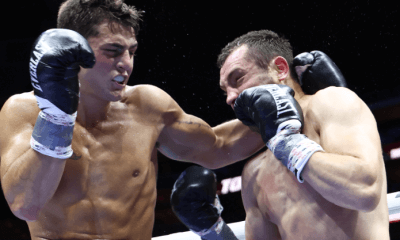
 Featured Articles2 weeks ago
Featured Articles2 weeks agoVito Mielnicki Jr Whitewashes Kamil Gardzielik Before the Home Folks in Newark
-
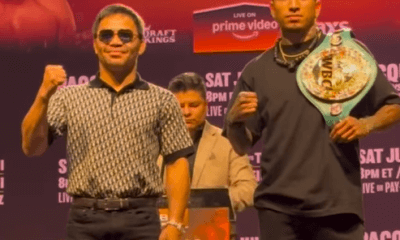
 Featured Articles4 weeks ago
Featured Articles4 weeks agoAvila Perspective, Chap 329: Pacquiao is Back, Fabio in England and More
-
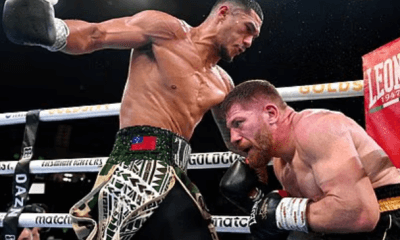
 Featured Articles3 weeks ago
Featured Articles3 weeks agoOpetaia and Nakatani Crush Overmatched Foes, Capping Off a Wild Boxing Weekend
-
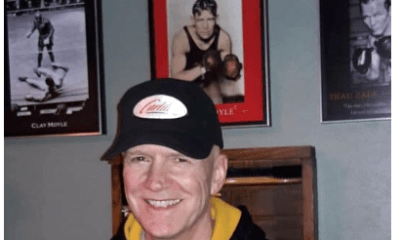
 Featured Articles2 weeks ago
Featured Articles2 weeks agoCatching Up with Clay Moyle Who Talks About His Massive Collection of Boxing Books
-

 Featured Articles4 weeks ago
Featured Articles4 weeks agoFabio Wardley Comes from Behind to KO Justis Huni
-
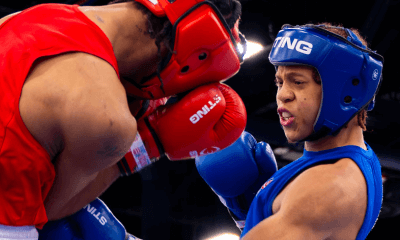
 Featured Articles1 week ago
Featured Articles1 week agoMore Medals for Hawaii’s Patricio Family at the USA Boxing Summer Festival
-
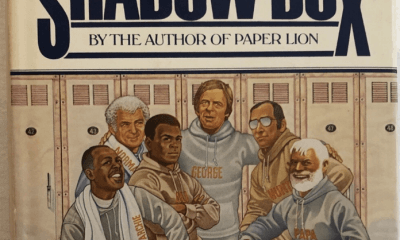
 Featured Articles4 weeks ago
Featured Articles4 weeks agoDelving into ‘Hoopla’ with Notes on Books by George Plimpton and Joyce Carol Oates















